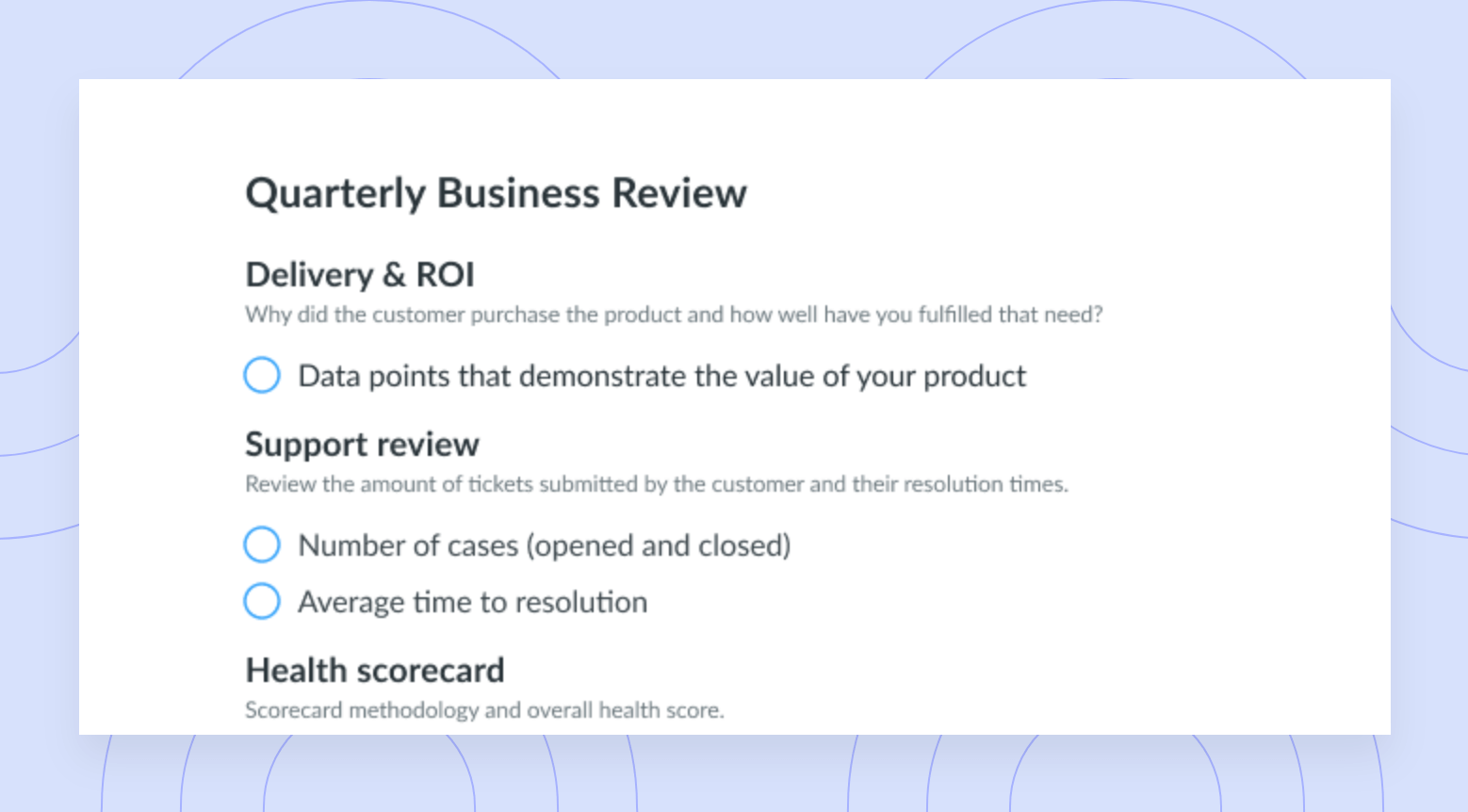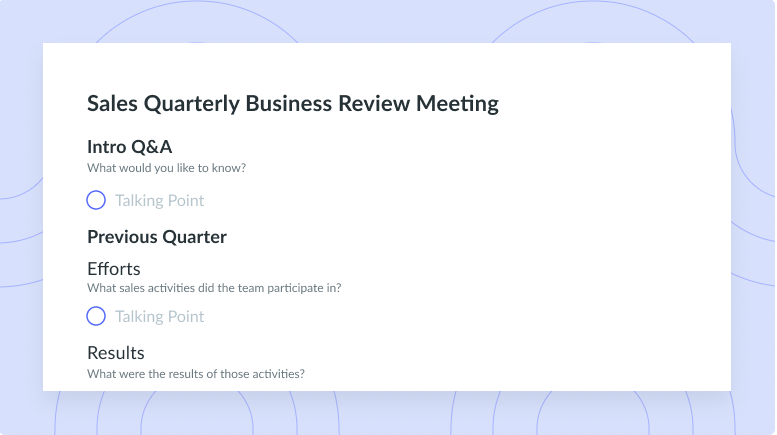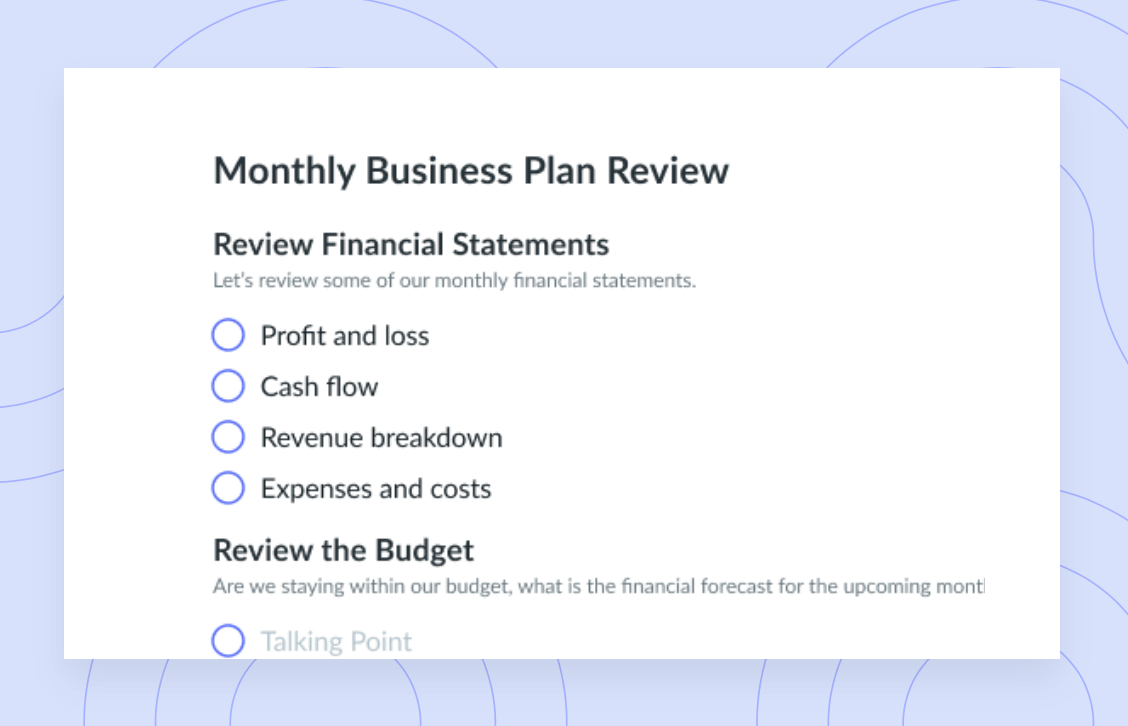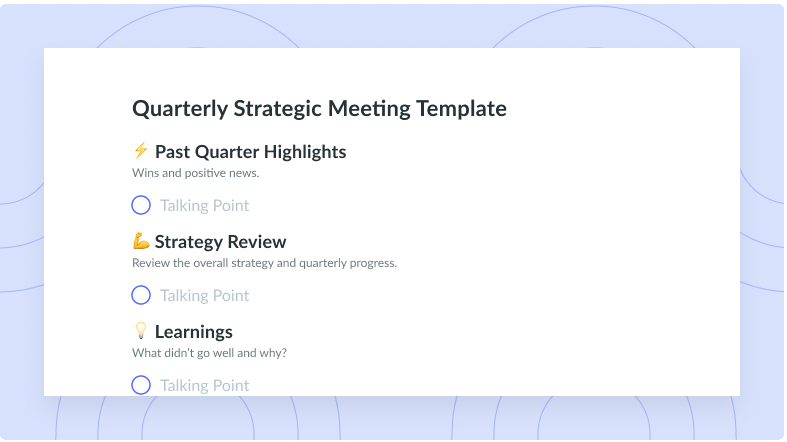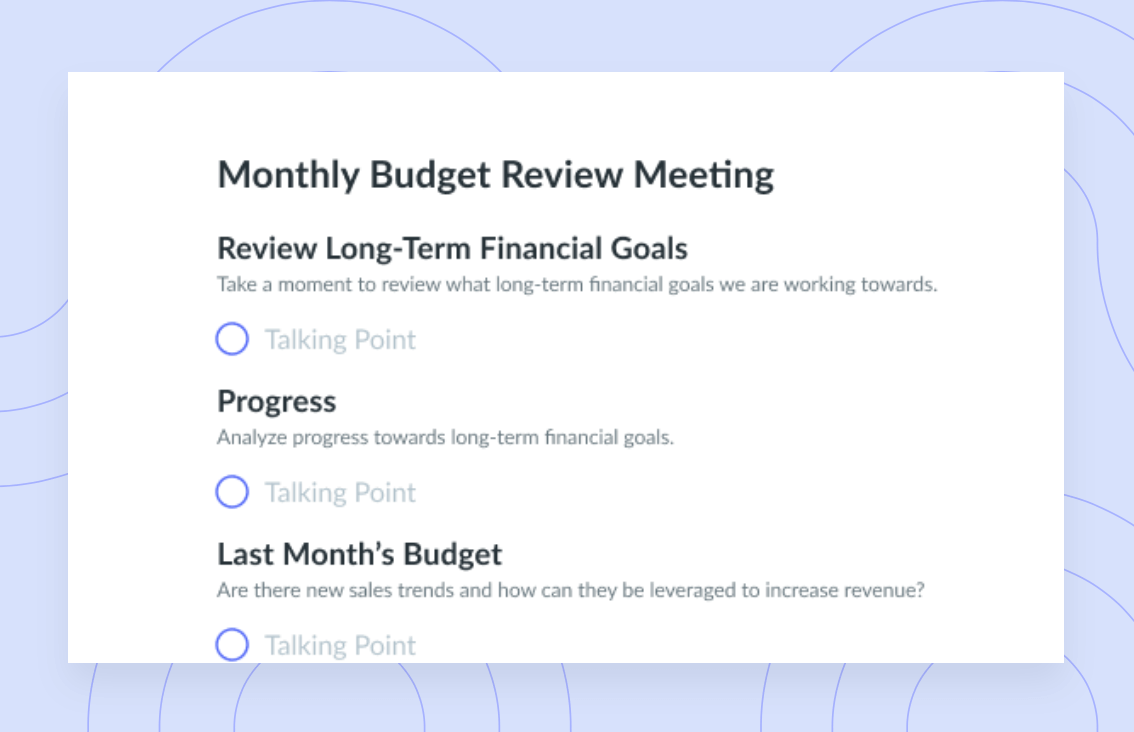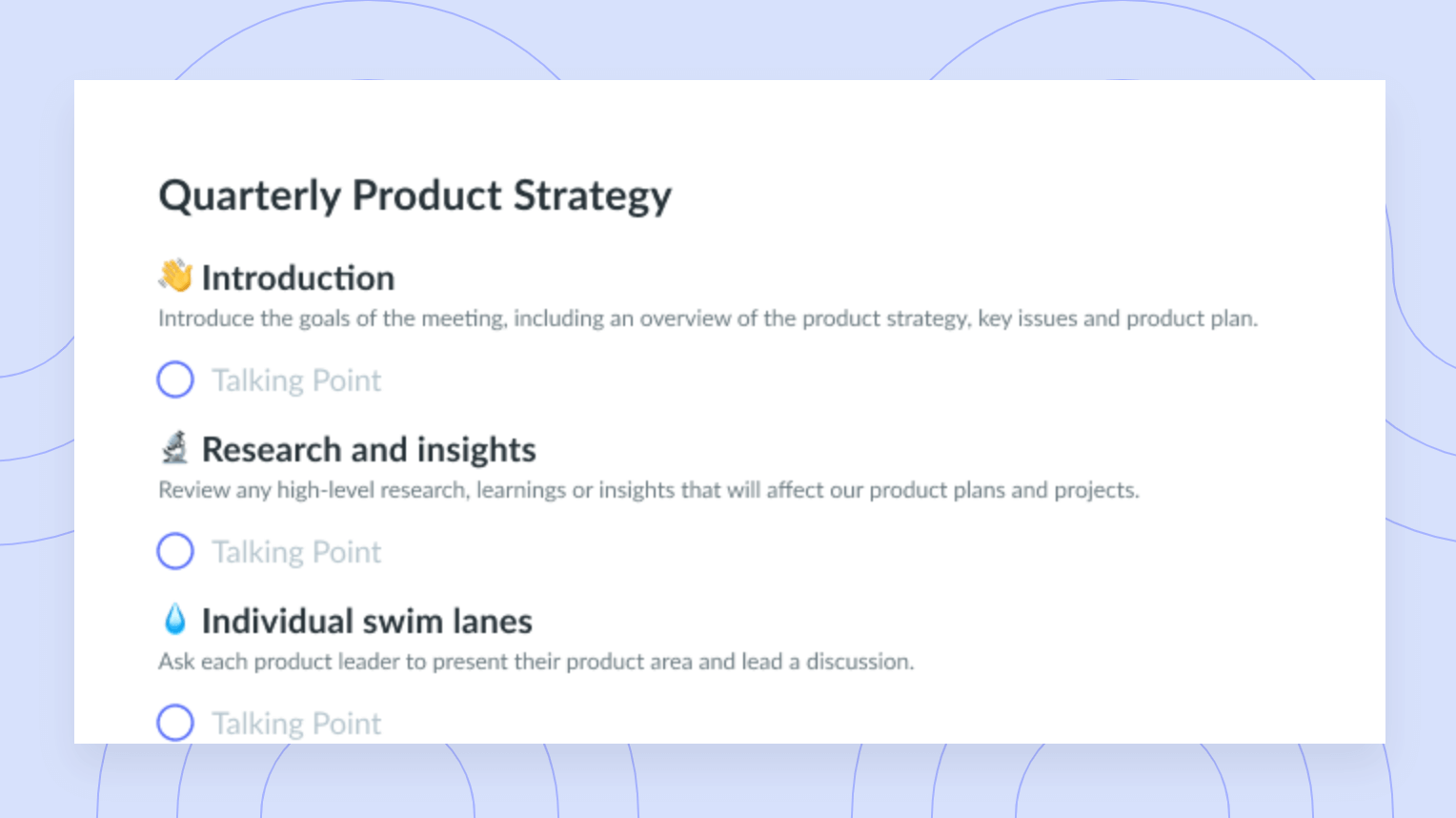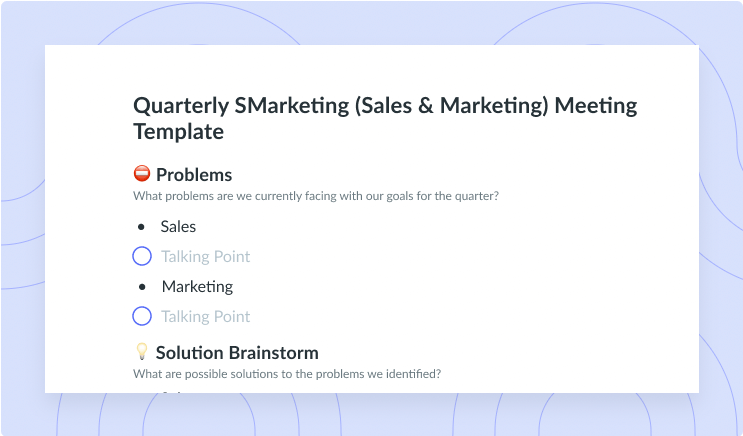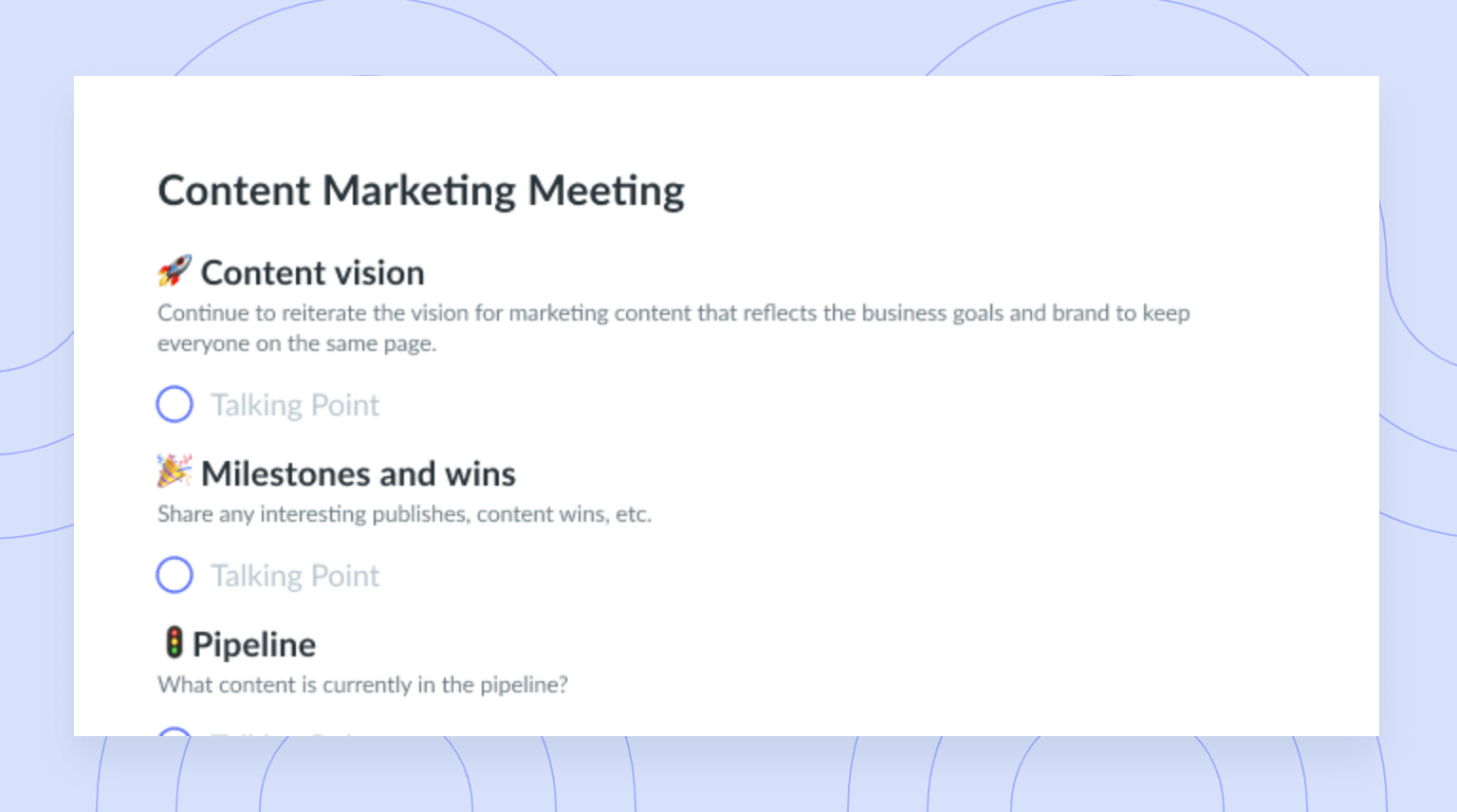How to Prepare a Quarterly Business Review (QBR) Meeting
Learn how to prepare a successful QBR so that you can align on and execute organizational goals. Check out these 5 steps that will build the perfect QBR and take note of the things that you’ll probably want to avoid.
Any customer success manager knows that the customers come first. Any customer success manager also knows the feeling of unease if they haven’t touched base with their clients for a while and are unsure about how satisfied they may be. To avoid that anxious feeling, it’s important that as an account manager, you conduct a quarterly business review (QBR) with your customers or clients so that you can discuss their business and make sure that you are serving them to the best of your ability, and that they feel satisfied with your service.
Don’t know where to start? We’ve got your back. Fellow has created a full guide to prepare you to conduct a productive and successful QBR for the upcoming quarter.
- What is a Quarterly Business Review?
- Why are Quarterly Reviews important?
- Steps to prepare a successful QBR
- Mistakes to avoid in your QBR
What is a Quarterly Business Review?
According to Gainsight “Quarterly business reviews are crucial to the effective operation of firms.” A quarterly meeting is held to discuss the company’s goals and upcoming projects. The individual goals that contribute to the overall aims of the firm should be discussed.
Smart Karrot provides a comprehensive description that defines a quarterly business review (QBR). In a recent article they highlight:
“It is conducted to discuss their business and how you can add more value. In a typical quarterly business review presentation, you go through all the progress made in the last 90 days, outlining your plan for the next 90 days. This forms an essential part of the CSMs responsibilities for delivering a client’s business outcomes.”
Many companies organize their internal reviews every fiscal quarter so that they can take a closer look at their revenue, return on investment (ROI) and other key performance indicators (KPIs) or objectives and key results (OKRs) that have been previously set.
If and when you’re able to, it’s great to conduct your quarterly business review in person, but for a lot of us in 2021, these are being held remotely. Just make sure that you’re planning well so that you can deliver the same quality while working from home.
Why are Quarterly Reviews important?
So, why is hosting a review meeting so important? You want to show your client that you have taken the time to reflect on the most important goals set (whether these are KPIs or OKRs) as well as your ability to plan for the future, to either deliver on these goals, or to set new ones.
It’s important that you show your client that you know their business in and out- in other words, you and your team are well equipped to deliver value to your customers. QBRs are important because they allow an opportunity to measure and evaluate performance which has been previously determined by your client’s overall mission and values. By looking at the results, you enable efficient planning for future successes.
QBRs also provide a concrete 90-day timeline to work with so that you can use concrete dates to drive specific deliverables. These review meetings hold you accountable and give the client a great opportunity to give you some feedback.
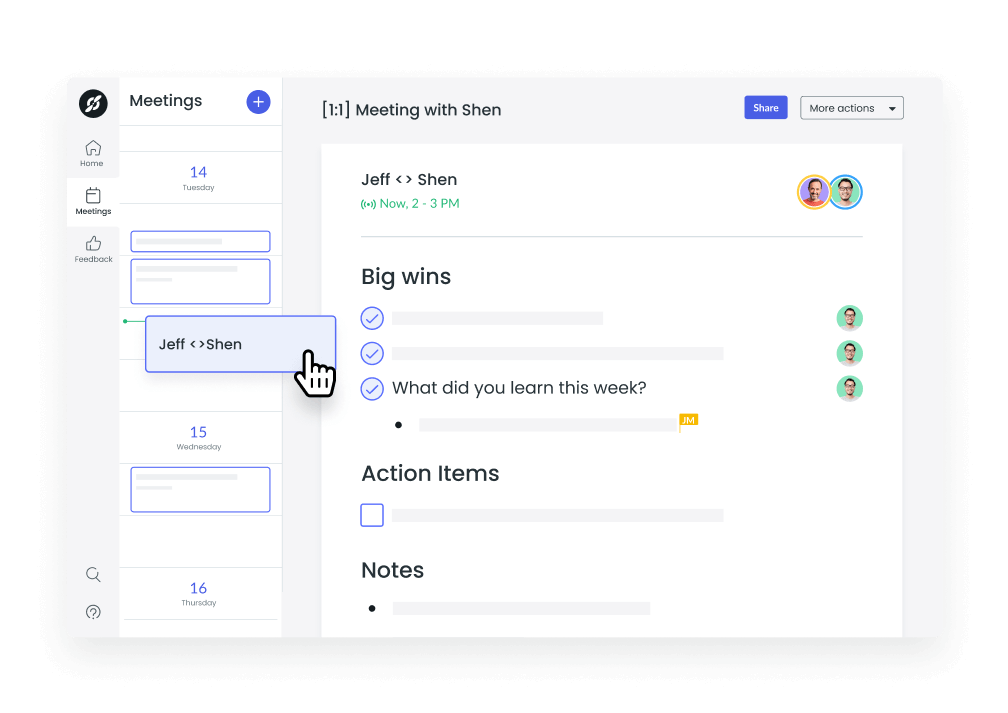
Steps to prepare a successful QBR:
Now that we’ve gone through what a QBR is and why they’re so important to the success of your team, let’s take a look at how to put them together. In order to prepare for a solid execution of your QBR, follow these 5 steps:
1 Review goals and KPIs
Start the meeting by reviewing previously set goals and your key performance indicators. Showcase the KPIs that you know matter the most so that your client isn’t waiting in anticipation for you to get to the point. Your goals and objectives can be tracked throughout the quarter in Fellow.app’s objective tabs. This makes planning the QBR easier as all the quarterly objectives and their progress are outlined in one place. In an article by Forbes, Lindsay Mullen from Prosper Strategies shares:
“We start our quarterly client strategy meetings by reviewing our campaign’s key performance indicators. These typically include new leads, qualified leads and customers acquired as a result of marketing and PR activities. From there, we are able to break it down into which tactics drove the most success and outline what we will do similarly or differently for the upcoming quarter.”
2 Show achievements
Showcase the achievements you’ve worked hard to bring to fruition. You want to maintain a positive tone earlier in the conversation to highlight the accomplishments that you’re proud of and that your client will feel satisfied with. Make sure that you continue to set results-based goals that can be measured based on the feedback of your actions from your customers so that you can take note as to whether your benchmarks can be achieved, and by when.

3 Inform stakeholders of challenges
It’s great to highlight your accomplishments but it’s also really important for you to shed some light on the challenges that you’ve been facing while trying to deliver for them. This is a great opportunity to be transparent with your client and build trust between yourselves. It’s also a great opportunity to collaborate and come to an appropriate and effective solution to confront these challenges together. There’s a good chance that your customer might even have some experience facing the same obstacles that lie in your path.
4 Share underlying opportunities
There’s always room for growth and it’s paramount to your business relationship to show your client that you’ve been looking for further opportunities for their company’s success and how you can help to get them there. This is going to show your client that you’re going over and above to think innovatively about how you can better and best serve their organizational goals. Your ability to think outside of the box is a huge added value for your customer and they’ll appreciate your creative and innovative approach to serving their business needs.

5 Discuss a roadmap and goals for the future
Develop a roadmap that includes a strong visualization of the strategies and the initiatives that you’re going to be implementing in order to hit client targets. Better yet, come prepared to your QBR with a printed or digital visualization of your roadmap so that you can go through a detailed explanation, including action items and timelines. As a customer success manager, you should use these roadmaps in order to communicate your goals and plans to execute these targets for your customers.
Mistakes to avoid in your QBR
We’ve looked at 5 valuable steps to prepare and execute a great QBR but we want to make it crystal clear that there are certain things that should be avoided. Make sure to steer clear from these 3 classic QBR mistakes:
1 Resist being defensive
The customer always comes first. You’ve heard this a million times throughout your career but it’s so true! Don’t go on the defense when things don’t go your way. Even if you don’t agree with your client, make sure that you listen attentively and process their concerns before firing back. It’s really important that you listen to any issues or challenges from your customer so that you can address them and find a collaborative solution.
2 Don’t blame anyone on your team for underperformance or mistakes
The blame game doesn’t look good… It just shows that you’re unwilling to take accountability as a team. As you know, teamwork is essential to successful initiatives and so you want to show your client that you work effectively and amicably with your colleagues.
How you treat others says a lot about the kind of teammate that you are. Even if you have some frustrations about a specific person, address them directly with some compassion and see how you can help them get to where they need to be. Your client doesn’t need to hear that it was all Andrew’s fault. The customer doesn’t care about Andrew, they care about the overall underperformance!
3 Don’t use the meeting to troubleshoot minor issues
The whole purpose of a QBR is to look at how you’ve done in the last 90 days in hitting your performance goals, what your achievements are and what challenges you’ve faced. There’s no point in getting into the nitty, gritty, seemingly irrelevant issues! Always remember to focus on the bigger picture and give attention where it’s warranted. Your customer is only a phone call or email away if there’s something small to follow up on that you and your team feel stuck on.
Closing thoughts
Planning is the most important preparation point for a successful QBR. You really want to make sure that you’ve put a lot of thought and effort into creating a review that addresses all aspects of the business and maps out a way to achieve customer goals.
Make sure that as you prep for your QBR you’re ready to do a deep dive into a review of the KPIs or OKRs you’ve previously set, highlight your achievements, present the challenges you’ve faced, propose some great future opportunities as well as a roadmap that outlines subsequent goals.
On the flip side, avoid being defensive, blaming other teammates and don’t focus on troubleshooting minor issues. We hope this article sets you up for success for the upcoming quarter.
Thanks for popping by the Fellow Blog. We hope to see you again really soon!
![30 Meeting Agenda Examples [and Free Templates]](https://fellow.app/wp-content/uploads/2021/07/Blog-Featured-Images-6.jpg)








